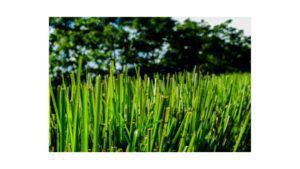Vetiveria zizanioides
The plant Vetiveria zizanioides belongs to the Poaceae family. This plant is widely distributed in Asia to tropical Africa. Common names of this plant are Khas-Khas, Khus, Vetiver, and Vala. The roots of these plants are believed to have medicinal benefits and are hence used in many traditional systems for the possible ailment of fever, sexual disorder, diarrhea, and dysentery (1). The Vetiver plant for sale is available offline and online.
Common features of Vetiveria zizanioides
- This plant grows well in any soil but is well-drained, sandy, loam soil is best.
- Need direct sunlight and a moderate amount of water.
- Grow well in humid to sub-humid conditions with a temperature of 25 °C (77 °F)
- Add nitrogen fertilizer about once a month to obtain the best growth.
- Pruning should be done three times and can harvest after 15-24 months
- Easy to propagate by offsets, seeds, or by root divisions, or ‘slips’.
- Safe for pets but the intake of higher dosages may be toxic.
Botanical description

Vetiver is a fast-growing, perennial bunchy herbaceous plant. It is similar to that of lemongrass in appearance and flavor.
1. Height
It is tall, tufted grass and can reach up to 2 meters (6 feet).
2. Stem
The stem is straight, erect, and rigid.
3. Leaves
The leaves are thin, elongated, and somewhat firm.
4. Flower
The plant bears small brown-purple flowers in long spikes.
5. Root
The fibrous roots grow downward in the soil and can attain depths of more than 3 meters (10 feet). Roots are strong, spongy, finely structured, and strongly scented (2).
How to grow and take care
Vetiver is a fast-growing plant, form cluster and highly drought-tolerant, and dislodges when exposed to a strong water flow. This plant can not grow in pots and containers. It is resistant to pests and diseases. It also protects fields against vermin and other pests, as well as weeds.
1. Soil
This plant can grow in almost every soil type but well-drained, sandy, loam, and rich in organic matter are best for growth. The saline and alkaline soil (pH 8.5 -10) is considered to be ideal for growth.
2. Water
This plant doesn’t like too much water or too little water, because overwater may stunt the growth of young plantlets. So regular checking of soggy soil is necessary. On the other hand, a mature plant can tolerate waterlogged conditions and absorb dissolved heavy metals from polluted water.
3. Light
The Vetiver plant needs direct sunlight for exclusively growth and also does well in a partially sheltered position.
4. Temperature and humidity
The ideal temperatures of soil required for healthy growth are 25 °C (77 °F) but it can tolerate at 13 °C (56 ° F). Vetiver plants grow well in humid to sub-humid conditions.
5. Fertilizer
These plants generally do not need fertilizer in fertile soil. However, fertilizer about once a month with nitrogen fertilizer and manure or compost during the growing season is good for poor soil. Suspend fertilizing during the dormant winter period.
6. Mulch
This plant needs mulching around the base of the plant. This process keeps the soil moisture and discourages root rot.
7. Pruning
Pruning is necessary thrice at 20-30 cm above ground level during the entire cropping period of two years. Trimming should be done first in 4-5 months after planting, second just before flowering, and last one month before digging.
8. Harvesting
Vetiver root can be harvested after 15-24 months of planting but harvesting at 18 months produces good quality oil. Irrigation suspended for 7-10 days before harvesting (3).
Propagation
The Vetiveria zizanioides plants are easily propagated using seeds or by root divisions or ‘slips’ but seeds are rarely used. Slips are separated from the clump with the rhizome and placed in moist soil or water thoroughly after planting. The best time of the year to propagate this plant is from June to August (4).
Where to find Vetiver plant for sale?
The Vetiver plant for sale is available offline and online. Specially the dry plant is available and is used in many home ailments
Toxicity to pets
A research study suggested that intake of vetiver oil in moderate dosage is non-toxic to rats. However, prolonged exposure of rats to vetiver oil can affect red blood cells, clotting, and cause organ degeneration. Intake of a higher dosage of vetiver oil may alter lipid metabolism (5).
